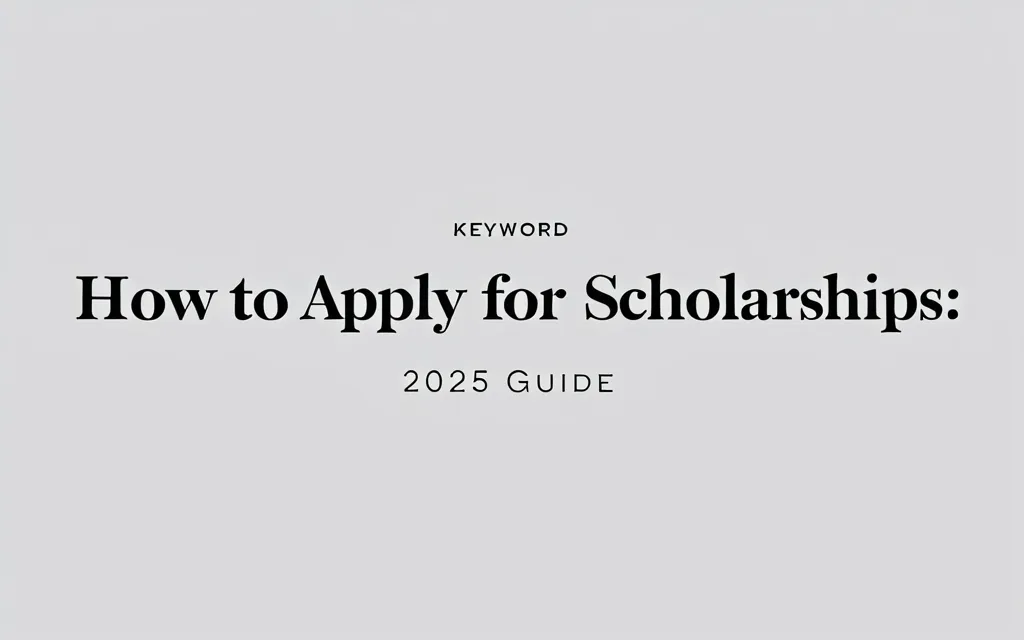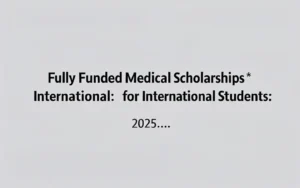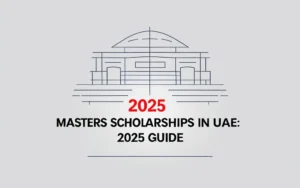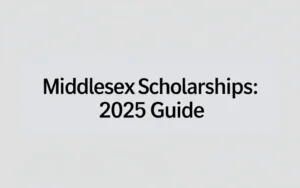How to apply for scholarships: 2025 Guide
Securing funding can be a game-changer for international and domestic students alike, but knowing how to apply for scholarships effectively is key. In this comprehensive 2025 guide, we’ll walk you through eligibility criteria, step-by-step strategies, expert insights, and proven tips to maximize your chances of success. Whether you’re aiming for merit-based awards or field-specific grants, this article equips you with everything you need to navigate the scholarship application process.
Table of Contents
- Why Applying for Scholarships Matters
- Understanding Eligibility and Scholarship Types
- Government and Institutional Scholarships
- Private and Corporate Scholarships
- Step-by-Step Scholarship Application Process
- Recent Trends and Data Insights
- Common Scholarship Application Mistakes
- Case Study: PES Scholars Program Expansion
- Related Resources
- Frequently Asked Questions
- What are the most common scholarship application mistakes?
- How do I increase my chances of winning a scholarship?
- What documents are typically required for scholarship applications?
- Conclusion
Why Applying for Scholarships Matters
With tuition costs rising and living expenses adding up, scholarships offer relief by reducing financial burden. In 2025 alone, programs like the PES Scholars saw a 300% increase in applications, highlighting growing competition and demand [2]. By mastering the application process, you position yourself ahead of thousands of applicants and secure vital resources for your education.
Understanding Eligibility and Scholarship Types
Before diving into applications, it’s critical to identify which scholarships align with your profile. Eligibility often hinges on factors such as academic merit, financial need, demographic criteria, or field of study.
Government and Institutional Scholarships
Many public universities and governments offer merit-based and need-based grants. For instance, the Ellucian Foundation PATH Scholarship Program supports students at public two-year institutions with comprehensive grants and mentorship [3].
Private and Corporate Scholarships
Corporations, foundations, and nonprofits also fund students, often focusing on specific majors or community backgrounds. Exploring platforms like Fastweb can uncover a broad range of opportunities curated for your field [1].
Step-by-Step Scholarship Application Process
Following a structured process not only keeps you organized but also ensures you meet all deadlines and requirements. Below is an actionable checklist to guide your journey:
- Create a scholarship application checklist: List deadlines, required documents, essay prompts, and contacts. Update it weekly to track progress.
- Research and identify opportunities: Use online platforms to filter scholarships by eligibility, location, and field. Consider long-tail searches like “how to apply for college scholarships in 2025” to find niche awards.
- Gather official documents early: Transcripts, test scores, financial statements, and identity proofs can take time to secure.
- Develop a strong personal statement: Tailor each essay to the scholarship’s mission. Highlight achievements, goals, and unique experiences.
- Request recommendation letters: Approach mentors, teachers, or employers well in advance. Share your resume and scholarship details to help them write informed endorsements.
- Review and proofread: Seek feedback from peers or mentors. Correct grammar, clarity, and alignment with criteria.
- Submit and confirm receipt: Use online portals or mail services with tracking. Always save confirmation emails or shipment receipts.
This process aligns with best practices recommended by experts: “Creating a personalized scholarship application strategy and utilizing online resources streamlines the entire process,” says Dr. Lisa Monroe, an education consultant with over a decade of experience.
Recent Trends and Data Insights
The scholarship landscape is evolving:
- Expansion of eligibility criteria, as seen in the PES Scholars program now welcoming a broader range of undergraduate students [2].
- Increased focus on digital application processes, including video essays and AI-assisted platforms that match students with ideal scholarships [5].
Common Scholarship Application Mistakes
Even strong candidates can falter if they overlook these pitfalls:
- Missing deadlines due to disorganization.
- Submitting generic essays not tailored to the scholarship’s goals.
- Failing to verify eligibility requirements.
- Neglecting to follow formatting or word count guidelines.
By anticipating these errors, you can refine your application and stand out.
Case Study: PES Scholars Program Expansion
In 2025, the PES Scholars program, which focuses on power and energy fields, saw applications jump by 300% after expanding its eligibility to include transfer students and non-traditional learners [2]. This demonstrates the importance of monitoring program updates and tailoring your applications accordingly.
Related Resources
Frequently Asked Questions
What are the most common scholarship application mistakes?
Common mistakes include late submissions, generic essays, incomplete documents, and ignoring word count limits. Always double-check requirements and deadlines.
How do I increase my chances of winning a scholarship?
Build a targeted strategy: research thoroughly, customize each essay, secure strong recommendations, and proofread meticulously.
What documents are typically required for scholarship applications?
Most scholarships ask for academic transcripts, test scores, financial need statements, personal essays, and recommendation letters.
Conclusion
Mastering how to apply for scholarships in 2025 requires planning, research, and attention to detail. By following the steps outlined above, leveraging expert advice, and avoiding common mistakes, you’ll be well on your way to securing the funding you need. Start your scholarship journey today—organize your checklist, draft that standout personal statement, and take the first step toward a debt-free education!
Ready to apply? Begin by exploring reputable platforms and drafting your best personal statement. Your future is worth the investment—apply now and unlock the doors to opportunity.






